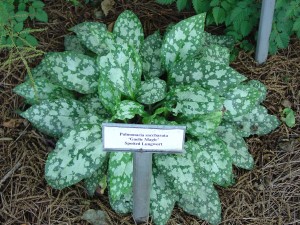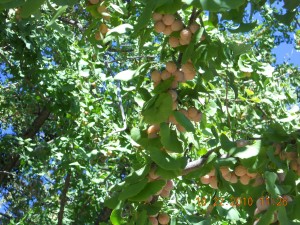Franklinia (Franklinia altamaha) is admittedly a very finicky large shrub or small tree. Pure white, five-petal, 2 ½ – 3 inch camellia-like flowers bloom sporadically from August thru mid-October. Flowers are slightly fragrant. In the fall glossy green leaves gradually transition to blends of red, orange and burgundy hues. Franklinia grows best on an eastern exposure […]
Archive for the ‘Soil drainage’ Category
Gaillardia Survival Depends On Winter Soil Drainage
In recent years several hybrid cultivars of blanket flowers (Gaillardia x grandflora) have been introduced. Some are annuals and others perennials. This North American prairie native is hardy in USDA zone 5 hardy. Gaillardias should thrive in the Southern Appalachian region (USDA zones 6 and 7), but they don’t! Soggy winter clay soil is their […]
Summer Pruning of Oakleaf and Bigleaf Hydrangeas
Bigleaf or “mophead” hydrangeas (Hydrangea macrophylla) tend to get tall and leggy, and outgrow their garden space. Our native oakleaf hydrangeas (Hydrangea quercifolia) are pruned as blooms quality declines. Remove or “deadhead” all withered or faded flowers. Main pruning time for these two species is from mid-June thru mid-August. Mopheads may rebloom if they had […]
Wolfeyes Chinese Dogwood
Chinese dogwood (Cornus kousa), a favored spring-flowering tree, reaches 20-25 feet in height and blooms two weeks subsequent to our native flowering dogwood (C. florida). The ‘Wolf Eyes’ cultivar forms a compact tree or large shrub, standing 8–10 feet tall and nearly twice as wide. lowly reaches 10 to 20 ft. tall and wide; largest […]
Double Take™ Flowering Quinces
Photo credit: Dr. Tom Ranney, NCSU Research Horticulturist Flowering quince (Chaenomeles spp) is an early spring flowering shrub, treasured for its brightly colored blooms (USDA hardiness zones 5-9). Old fashioned quince shrubs produced small amounts of fruits which were gathered and prepared into yummy jelly in the autumn kitchen. These often large 10-12 foot tall shrubs produced small sharp […]
Pulmonarias: Wonderful In The Shade Garden

Although my multi-year addiction for hostas has never waned, I remain equally passionate about the lungworts (Pulmonaria spp.). Lungwort is also called Bethlehem sage and Jerusalem sage. Their uniquely splotched or variegated foliage wakes up a dark patch in any shade garden. Lungworts are planted as ground covers and for color accents. In early spring (March), lungworts send up […]
Winter Jasmine Rising
Is the worst of winter behind us? Winter jasmine (Jasminum nudiflorum) is often confused with forsythia shrubs which bloom 3-4 weeks later in the spring. This hardy winter blooming vine from China frequently blooms in late February and March when daytime temperatures climb into the mid-50s for a week or more. Evening chilling temps down into the […]
Culver’s Root (Veronicastrum)
Midwest native Culver’s root (Veronicastrum virginicum) starts the summer flowering season in my perennial garden. It naturally grows in open woods and meadows and thrives in fertile to moist soils. However, this deep rooted plant hasn’t complain about the current dry period in the Southern Appalachian region (USDA zones 6-7). Be aware that culver’s root […]

 Posted in
Posted in 


